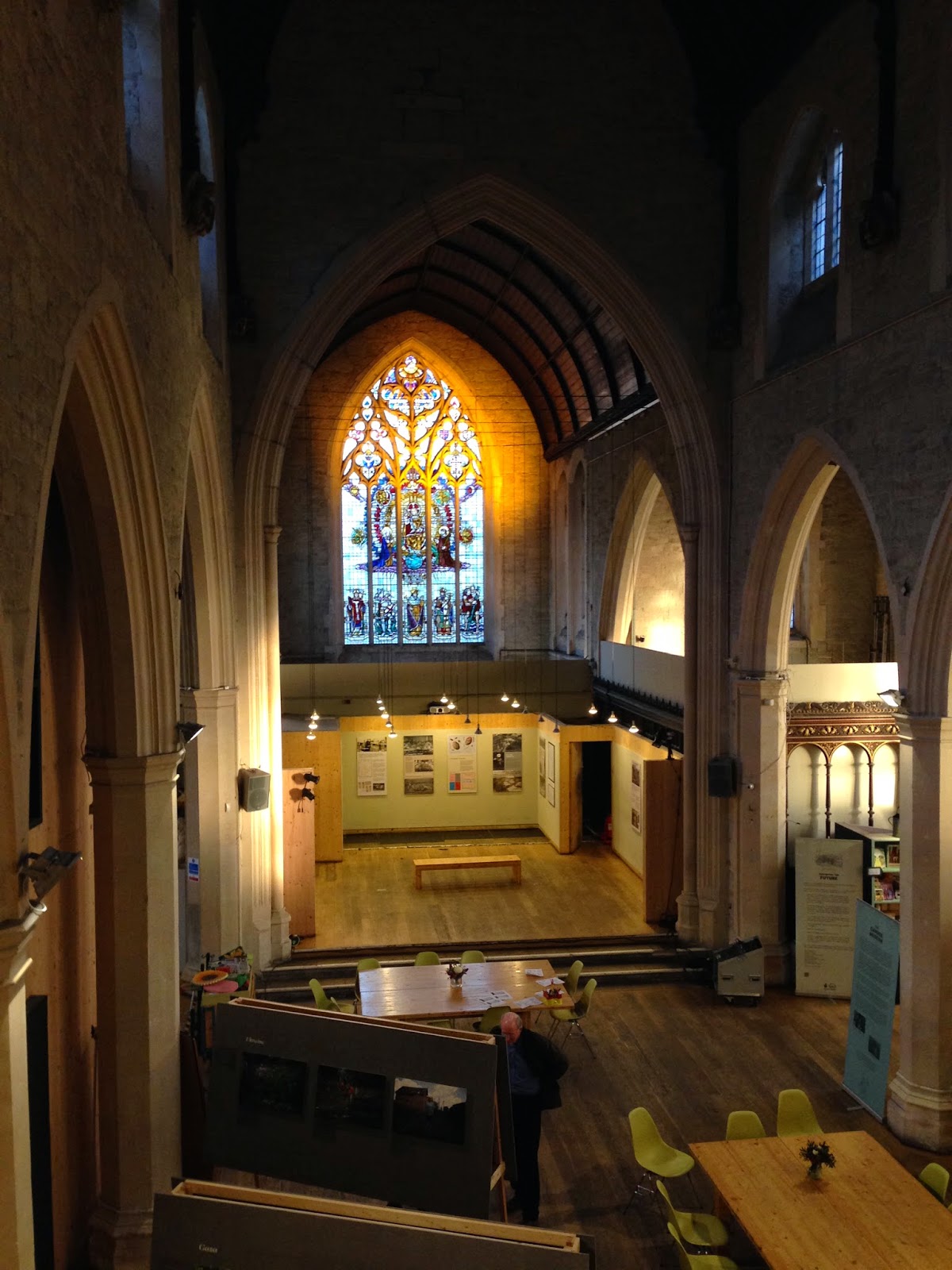"In an encounter with Siegfried Sassoon in parliament in 1918, Winston Churchill claimed ‘War is the normal occupation of man’. When challenged, he added: ‘War – and gardening.’ "
To escape the hustle and bustle of the high street (and the worrying pile of unwrapped presents sat at home!) I headed to The Garden Museum in Lambeth, London. It's a lovely little museum that many haven't heard about, I had visited once before during my final project as Uni when i was researching the English's relationship with gardens, but I was very much looking forward to coming back! The museum is actually in St Mary's Church itself, and was set up in 1977 to prevent demolition of the church and to preserve the burial place of John Tradescant (c1570-1638) the first great plant hunter in British History. Now the museum provides a rare glimpse into the uniquely British love affair with gardening, needless to say, my kind of place!
Inside the museum has several sections, the main hall houses the cafe, shop and an exhibition area, and upstairs is the permanent collection of garden artefacts. They have some really wonderful items, including original advertising displays such as this Yates Seeds tray, I adore the illustrations! There are plenty of fascinating photographs of portraits of gardeners, a subject close to my heart as I collect them myself, all of which celebrate that famous British eccentricity, people peering out from behind plants and proudly holding their homegrown bounty!
But one of the main reasons I visited was to catch the "Gardens and War" exhibits, a collection of projects referencing both modern and historical examples of wartime gardening. This exhibition in the main hall was "Modern War Gardens: Paradise Lost" photographs by Lalage Snow.
For many of us, gardening provides a tranquil escape from the hubub and routine of daily life, but for some it represents an escape from an otherwise dangerous, volatile place. Sometimes the gardens themselves cannot even escape, plants grow through the gnarled, twisted metal of shell cases and shrapnel, barbed wire stands instead of garden fences. These photos are a fresh take on modern warfare and is hopeful despite the obvious dangers, they reminded me of the quote "to plant a garden is to believe in tomorrow."
Flowers collected by Private George Marr of The Machine Gun Corps. Salonika, Greece, 1917.
The "Gardens and War" exhibit was in a separate room, and as soon as I pushed open the door the sight of all these dried flowers suspended from the ceiling took me completely by surprise! The hanging wild flowers are by Rebecca Louise Law and were inspired by a journal written by Private George Marr of The Machine Gun Corps, who chose to press wild flowers from the battlefields of Greece within the pages. He is described as ‘an incurable romantic soldier’ and I think it's wonderful The Garden Museum have curated this exhibition around his heartfelt gesture.
I have been facinated by this unlikely relationship between gardens and warfare for a while now, it just seems so unlikely that in places of such destruction and trauma that anyone could find the moment to cultivate the surrounding land, but that's exactly what happened! The land armies effort back home growing food to feed the country is well documented, but I never knew that abandoned trenches were utilised for growing vegetables! The exhibition included a medal awarded for the best grown vegetable, and also rare photographs of flower gardens established at the front. The vegetables were a practical option, but the flowers just surely provided a welcome reminder of home and a more peaceful time. Never underestimate how nature can heal your soul.
Soldier of the Gordon Highlanders (51st Division) tending his trench garden. Arras, 1917 (Copyright IWM)
Poppies were of course included in the dried flower display, and I was very interested to read this piece explaining it's history stretches back before The First World War. A pressed flanders field poppy was a poignant reminder of how iconic this hardy flower has become, and held very highly by many of us.
I highly recommend taking your time to stroll around the museum, and also to have lunch in their super cafe which sells fresh homemade produce every day (I had a very tasty vegetable tart with a selection of salads...and a massive slice of Lime and Courgette cake!) and the shop is fantastic, huge selection of gardening related gifts and books, a very unique shop! We strolled along Southbank as the sun was settling which provided a very pretty walk, seeing it all lit up for Christmas got me feeling very festive!
The next morning I went on a walk to The Royal Observatory to get some fresh air and get to know Greenwich better, the city looks nice from other here!
Hope this week hasn't been too hectic for you, we're nearly there now!
Thanks for reading,
Katie



























4 comments :
I've been thinking (& learning) a lot about the First World War over the past few months and had never heard about gardening happening in the trenches. Also that photo of an Afghan soldier is so powerful. Thanks for sharing.
The dried flower display is beautiful.
Merry Christmas Katie!
Beautful. Merry Christmas!
Love this post and I have put the Garden Museum on my list of places to visit. I studied horticulture and garden design a few years ago so have a great interest in garden history. I still have a post to publish about the garden at Tatton last year based on the letters of a WW1 soldier gardener. I love the old photos too. Happy New Year!
Post a Comment